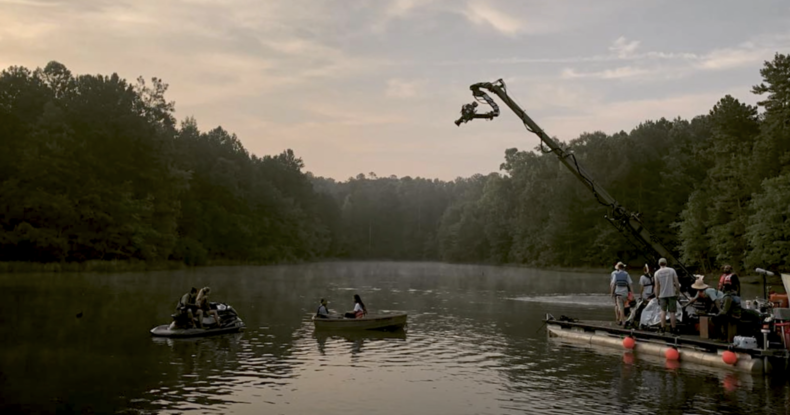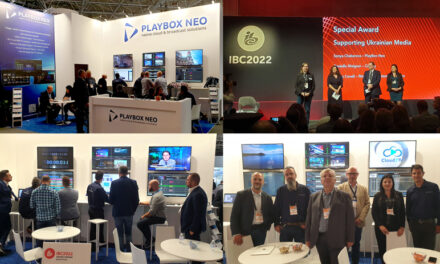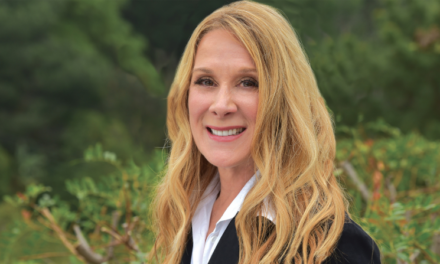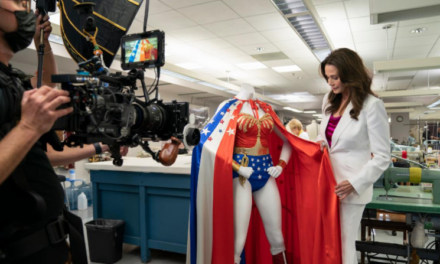Renowned cinematographer Armando Salas ASC, known for his work on “Ozark,” “Invasion,” and most recently, “The Terminal List,” is a trailblazer when it comes to visual storytelling, supported by his use of innovative technologies to optimize feature and episodic production. Today, his standard for on-set and remote communications is Clear-Com®’s FreeSpeak II® Digital Wireless Intercom System.
With a passion for cinema that developed at an early age in Miami, Florida, the Cuban native discovered Super 8 film in his teens, which set him on the path to becoming a cinematographer. After years of shooting independent features, Armando moved to large-scale episodic projects with his work on Robert Rodriguez’s “From Dusk till Dawn” series.
In a fast-paced and sometimes chaotic atmosphere, clear and direct communication on a set is crucial, especially when crew members are working together across great distances. Fostering an environment of efficient communication during these complex and challenging sequences is critical to saving both time and money. “When you’re up against the clock, as we are in episodic projects, time is always your enemy,” he says. So naturally, as he began shooting again during the COVID-19 pandemic, Armando admits he was “worried about communication in a world of social distancing and masking.”
That’s when he was introduced to Clear-Com’s FreeSpeak II digital wireless intercom. An IP-based, full-duplex wireless solution, FreeSpeak II is designed for extensive and continuous communications for operations in rigorous environments.
“When working together for 12 hours a day, often for months at a time, having a crew that is communicating well and on board with the technology choices is imperative to a smooth operation,” Armando said. “Previously, I was juggling a lot of equipment: beltpacks and earbuds for the sound feed, a walkie to reach department heads, and a single-channel HME system to communicate with my operators. It was quite cumbersome. I don’t simply choose technology because it’s the latest; I’m always evaluating what we do and how we can improve it. FreeSpeak II has simplified our set-up and been a game-changer for our on-set communications.”
As Director of Photography, Armando is responsible for many aspects of the look and feel of a show. Fundamental to his role is being able to communicate with all connected departments on set while also being available to the director to discuss creative direction. Previously, this was accomplished by face-to-face interactions or one-way comms tools and walkie-talkies. “During production, I need to talk and listen to my team simultaneously, regardless of where they’re located,” he says. “There are often times when I’m spread out from my collaborators because of the nature of the scene or shot. The director may have a note for an actor or an operator that may have ramifications across several departments. I find that being able to communicate those pieces of information efficiently allows for more time to get production value on screen. What previously took a lot of coordination now happens seamlessly.”
With FreeSpeak II, Armando can turn on and off the audio feed from the sound department as needed and uses the other three discrete channels for his key collaborators on the camera, grip and lighting departments. With crew members tied into the FreeSpeak II system, the team can all communicate clearly and instantly. Plus, each crew member can program their beltpacks to hear the conversations that serve them best.
FreeSpeak II effectively transforms the production workflow by supporting collaboration and helping execute tasks that couldn’t happen if the crew was on a wired or more traditional solution, such as walkie-talkies. Initially, FreeSpeak II helped address COVID-19 pandemic limitations for Armando, as it provided a communications infrastructure that supported social distancing and remote operations. Today, with most of those on-set restrictions lifted, this form of sophisticated, wireless communication enables discrete conversations and the ability to quickly share directions among the crew with minimal disruptions, leading to a much quieter and more efficient set.
Armando is still finding ways to enhance this process, and a crucial feature that has come into play is the ability for FreeSpeak II to interface with walk-talkies. “My focus pullers wear the Clear-Com beltpacks, but they still need to communicate with their teams on walkies,” he said. “Our Clear-Com system is patched into the walkie channels, which means my focus pullers and other department heads only need to wear their Clear-Com packs as their single tool to communicate both with me and their extended team.” Crew members overcome their hesitancy to try the new system once they realize it means less equipment to carry around.
One of the other advantages Armando enjoys with the FreeSpeak system is the availability of remote support from Clear-Com. “In all the times we’ve used our system, we’ve only had a single issue that I can recall,” he says, “And the Clear-Com support team was able to remotely log in and verify everything was working the way it should and then help us troubleshoot any issues. Plus, my Digital Imaging Technician (DIT) was completely dialed in with how straightforward and user-friendly the FreeSpeak base station and wireless beltpacks were to use, charge and maintain.” At the end of each show, his DIT is able to simply rename the program files and reprogram the beltpacks, making them ready for the next production.
Many cinematographers are following Armando’s lead by embracing modern communication methods on their production sets. Clear-Com’s FreeSpeak II delivers clear and measurable advantages by reducing production time and communication barriers, thus allowing for more organization, efficiency, and ultimately, cinematic creativity.





